14 Deer-Resistant Plants for Your Garden Zone
Want to grow a garden that doesn't get chewed up by these hungry invaders? Here's what to plant depending on where you live.
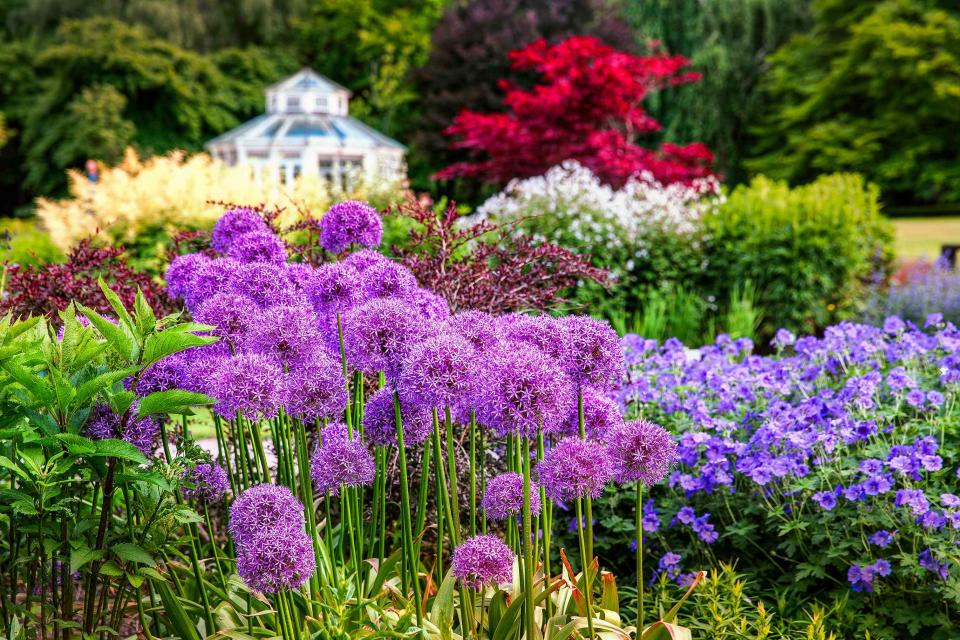
RolfSt / GETTY IMAGES
When it comes to keeping deer from turning your prized landscaping into a hearty meal, experts have good news and bad news. The bad news: No plant is entirely deer-proof; these animals will settle for anything during harsh winters or droughts, and often may try gnawing on your new bush before they realize they don't like it.
But now, the good news: From plant hardiness zones 1, the iciest north, to 13, the most tropical south, a variety of flowers, shrubs, and small trees deter deer with hairy branches, strong scents, and spiny leaves. These plants, which include ground covers, rock garden standbys, bed flowers, and property borders, offer a rainbow of blooms in spring, summer, and fall and evergreen foliage year round. "Things that attract deer are things that are easy to eat—like hosta, tulips, and daylilies," says Mandy L. Smith, the master gardener coordinator for Westmoreland County at Penn State Extension. "You want to interplant those deer-resistant species among other things; it's all about strategy and experimentation."
Related:5 Expert-Approved Ways to Keep Animals Out of Your Garden
Yaupon Holly
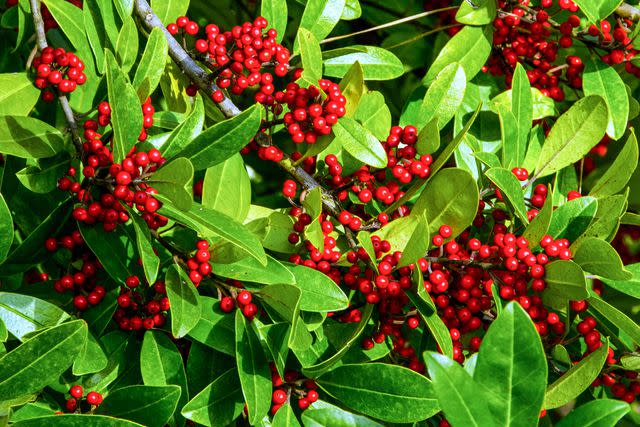
Photo credit John Dreyer / GETTY IMAGES
Though native to the southern part of the United States, yaupon holly grows well throughout the entire country, from zones 1 to 13, says Michael Arnold, Ph.D, professor of landscape horticulture in the Texas A&M Department of Horticultural Sciences and director of The Gardens at Texas A&M University. Glossy, fine-textured foliage backs shiny berries, and cultivars range in size from 4-foot-tall bushes to 20-foot-tall (or taller) trees—so you can find a plant for every property.
Zone: 1 to 13
Size: 4 feet to 20 feet tall
Growing conditions: Full sun to partial shade; well-drained soil
Juniper
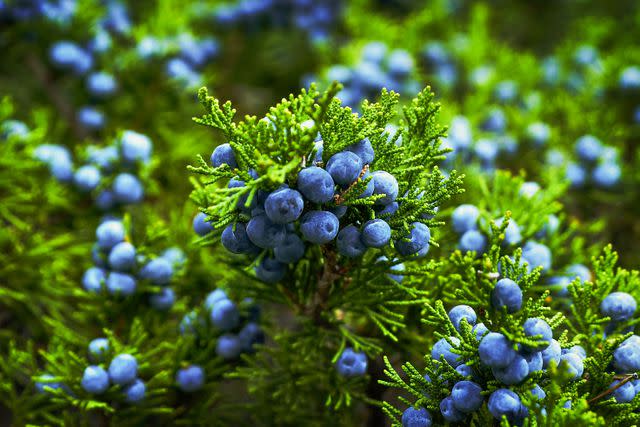
Yevgeniy Drobotenko / GETTY IMAGES
With a varying size range, hardy juniper bushes can fit in nearly any space; they're also not picky about the conditions, as long as they receive some sun and don't get soggy. The strong smell and taste, along with the bristly foliage, encourage deer to walk on by, says Abiya Saeed, extension horticulture associate specialist at Montana State University.
Zone: 2 to 9
Size: 12 inches to 15 feet tall x 24 inches to 20 feet wide
Growing conditions: Full sun to part sun; well-drained soil
Alliums
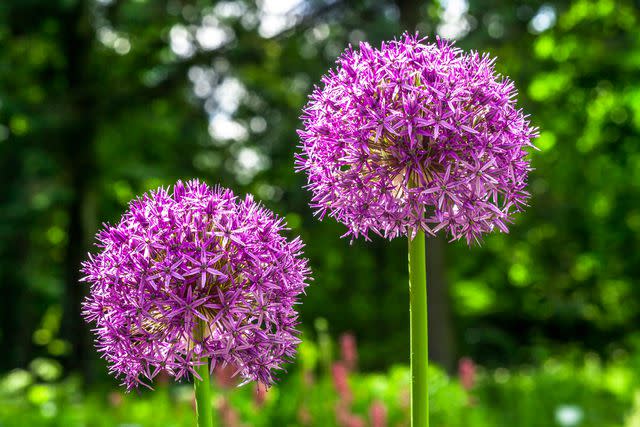
dmf87 / GETTY IMAGES
The allium species is known for its savory members, including onions, leeks, chives, and shallots. The prettier ornamental versions, which include a large, round head of pink, red, purple, white, or yellow flowers on a tall green stalk, share their relatives' strong scent, making them unpleasant to deer and other animals, says Saeed.
Zone: 2 to 10
Size: 6 to 12 inches tall
Growing conditions: Full sun; well-drained soil
Elderberry
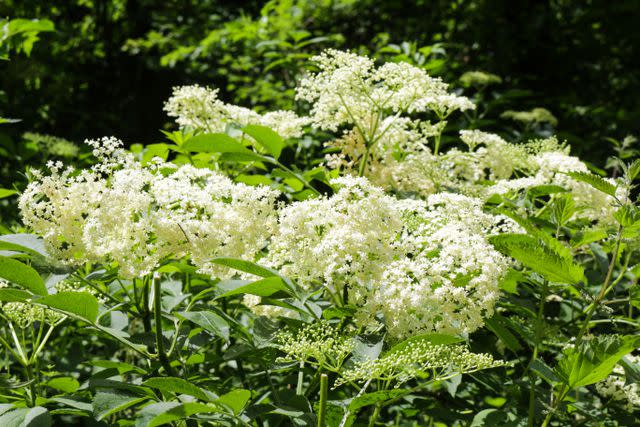
mtreasure / GETTY IMAGES
If you have space for tall elderberry shrubs, which can grow to a height and width of 12 feet, adding one to your yard can benefit local wildlife—without drawing deer. The bumpy stems and interior pith both deter deer; the berries and branches provide food and shelter for dozens of bird species and the blooms draw welcome pollinators, says Smith.
Zone: 3 to 7
Size: 12 feet tall x 12 feet wide
Growing Conditions: Full sun to partial shade; moist, well-drained soil
Heartleaf Foamflower
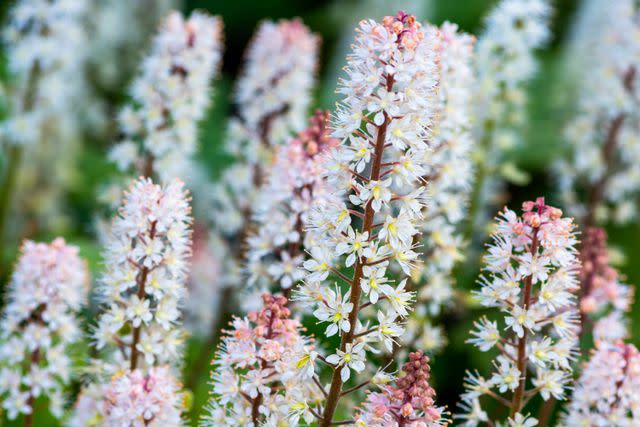
Tom Meaker / GETTY IMAGES
The slim white blooms on heartleaf foamflower are popular with bees, butterflies, and other pollinators—but not with deer, likely because of the hairy leaves, says Smith. This early-blooming perennial thrives in shade gardens and wooded areas.
Zone: 3 to 8
Size: 12 inches tall x 12 to 18 inches wide
Growing conditions: Full shade to partial shade; moist, well-drained soil
Soapwort
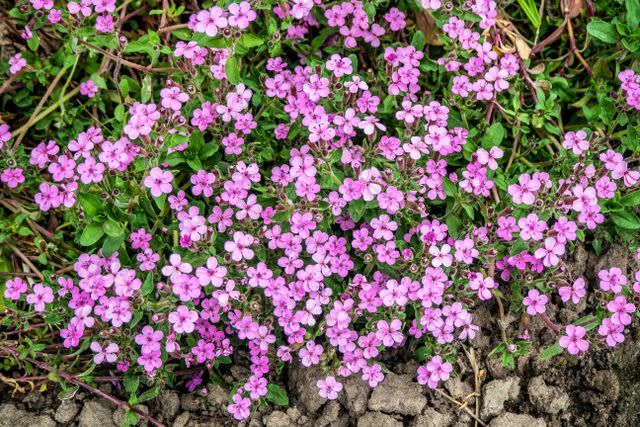
v_zaitsev / GETTY IMAGES
The pretty pink or white flowers of soapwort, a perennial bloomer in summer and early fall, are recognizable in part by their distinctive scent. This plant can be used to make laundry detergent, body soap, and shampoo, but the aroma and bitter-tasting leaves won't entice deer to come by for a snack, says Saeed.
Zone: 3 to 8
Size: 6 to 36 inches tall x 12 to 24 inches wide
Growing conditions: Full sun to partial sun; well-drained or rocky soil
Moss Phlox
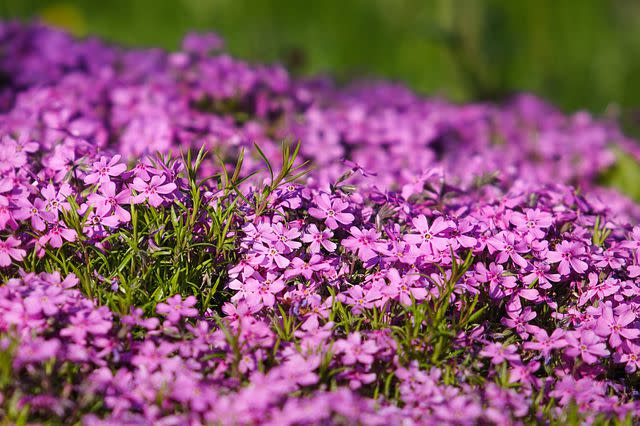
joruba / GETTY IMAGES
This creeping ground cover offers "a profusion of blooms" in spring, says Smith, with pink and purple flowers covering "needle-like" leaves. "If you touch it, it feels spiny, which is why deer don’t want to eat it," says Smith. "It would be all these prickles in their mouth." Moss phlox is popular in foundation plantings, rock gardens, and as a border plant.
Zone: 3 to 9
Size: 6 inches tall x 24 to 36 inches wide
Growing conditions: Full sun; moist, well-drained soil
Bigroot Prickly Pear
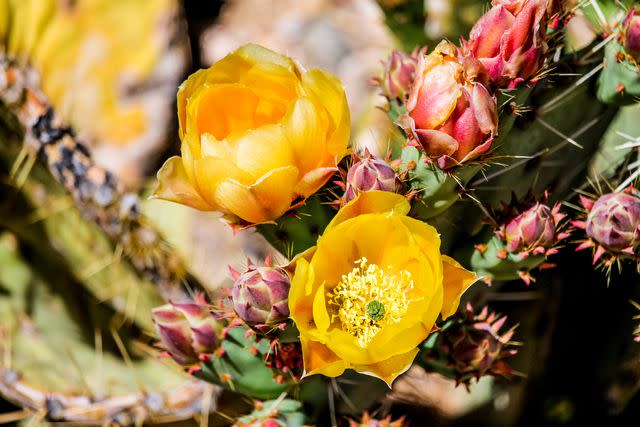
DGHayes / GETTY IMAGES
Bigroot prickly pear, or Opuntia macrorhiza, includes spiny foliage and fruits that deer aren't interested in trying to eat, says Saeed. This low plant blooms with yellow-and-orange flowers in May and June, and is popular in rock gardens, on stone walls, and as ground cover.
Zone: 3 to 9
Size: 6 inches to 14 inches tall x 36 inches wide
Growing conditions: Full sun; dry soil
Iris
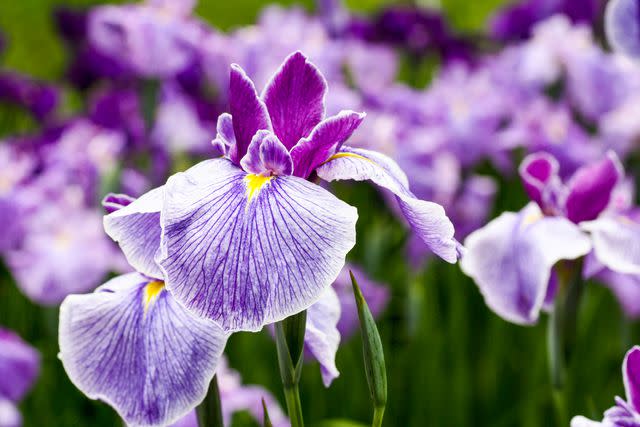
inomasa / GETTY IMAGES
Bold irises are a garden standby in much of the country, as they thrive in zones from north to south. But their bitter taste and strong smell make them unattractive to deer in those regions, too, says Saeed.
Zone: 3 to 10
Size: 6 inches to 4 feet tall x 18 to 24 inches wide
Growing conditions: Full sun; well-drained soil
Carolina Allspice
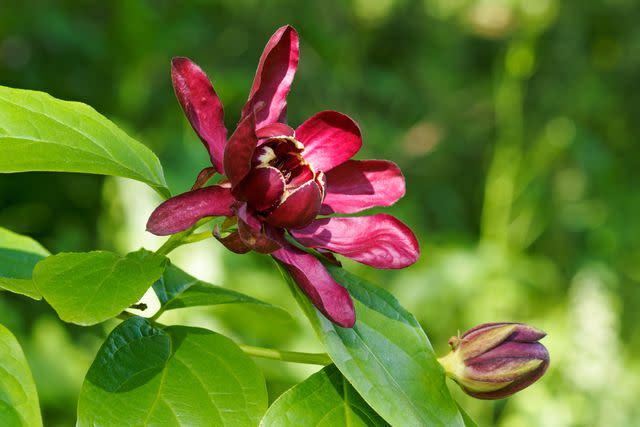
nickkurzenko / GETTY IMAGES
As the name implies, this aromatic flowering shrub, which displays striking reddish-purple flowers against deer-resistant hairy leaves, puts off deer with its scent. "The twigs and the flowers have an aroma that deter deer," says Smith. "The stems smell like allspice, but the blooms have been described as a hint of pineapple, strawberry, and banana." Since the bush grows tall and wide, Smith recommends it as a property edging or privacy screen.
Zone: 4 to 9
Size: 6 to 12 feet tall x 6 to 12 feet wide
Growing conditions: Partial shade to partial sun; rich, moist, well-drained soil
Virginia Sweetspire
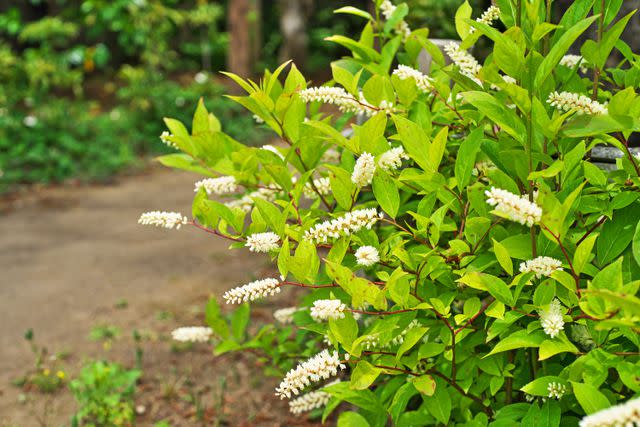
igaguri_1 / GETTY IMAGES
Virginia sweetspire, a small, woody shrub, shows off bunches of small white flowers in summer and fiery, reddish-orange leaves in autumn. But year round, deer tend to pass by these plants, says Smith, who grows the plant in her organization's deer-resistant demonstration garden. "The leaves are slightly fuzzy on the underside," she says. "They don’t bother it at all."
Zone: 6 to 9
Size: 36 to 60 inches tall x 36 to 60 inches wide
Growing conditions: Full sun to partial sun; moist, well-drained soil
Lindheimer Muhly
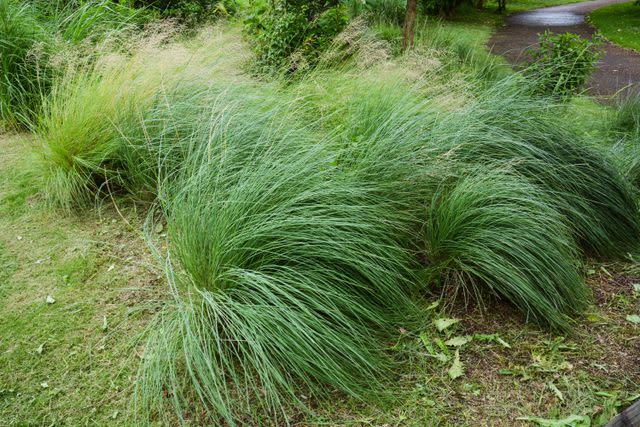
undefined undefined / GETTY IMAGES
This deer-resistant mid-size ornamental grass has a fine texture and subtle range of colors, from a fresh green in summer to a rustic tan in winter. Tiny white flowers grow in loose bunches—called panicles—at the tips of the grass; Arnold recommends the plant, named after the "Father of Texas Botany," Ferdinand Jacob Lindheimer, as a native-growing alternative to Chinese silver grass.
Zone: 7 to 9
Size: 36 to 60 inches tall x 36 to 60 inches wide
Growing conditions: Full sun; well-drained soil
Lantana
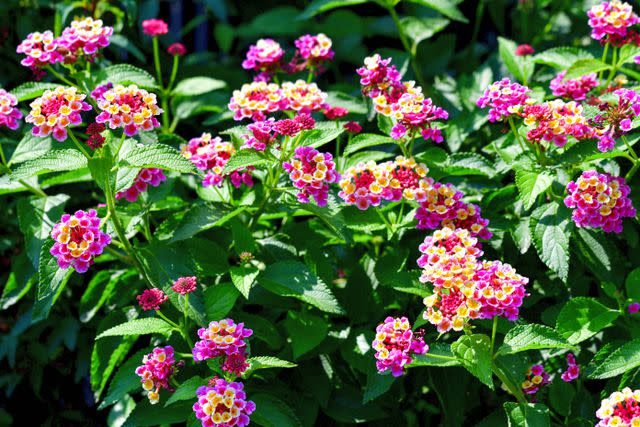
magicflute002 / GETTY IMAGES
The species Lantana, a popular summer annual in the northern part of the country, are typically perennials in zones 7 and 8 and evergreen shrubs in zones 9 to 13, says Arnold. The shrub version bursts into color with yellow, red, pink, and orange blooms against dark green leaves, while the trailing version boasts white or purple petals; though the flowers draw pollinators, deer will pass on the "aromatic prickly to scabrous foliage" that’s hard to chew. "All species flower from late spring to frost, or essentially year round in subtropical and tropical regions," says Arnold.
Zone: 6 to 13
Size: 48 to 72 inches tall x 48 to 72 inches wide (as shrubs)
Growing conditions: Full sun to partial shade; well-drained soil
Turk's Cap
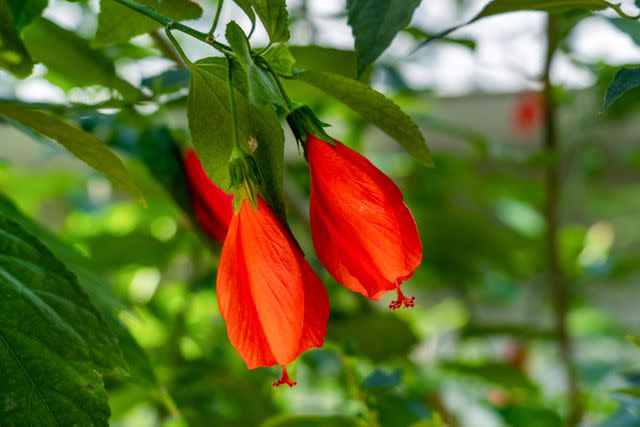
E46AV22 / GETTY IMAGES
Malvaviscus arboreus var. drummondii spreads underground, says Arnold, slowly forming a colony of suckers that are easy to trim back to maintain the shrub's size. The plant blooms from spring until frost season—even when grown in the shade—while deer avoid the foliage and flowers.
Zone: 8 to 13
Size: 36 to 96 inches tall
Growing conditions: Partial shade to partial sun; rich, well-drained soil

